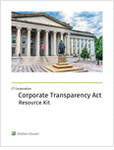 U.S. Supreme Court Chief Justice John Roberts at New York University School of Law.
U.S. Supreme Court Chief Justice John Roberts at New York University School of Law.
November 20, 2015 (Photo: Rick Kopstein)
U.S. Supreme Court arguments Tuesday over the cross-border shooting of a Mexican teenager by a federal border officer moved deeper into uncharted legal territory when Chief Justice John Roberts Jr. raised the specter of drone shootings.
The case in front of the justices—Hernandez v. Mesa—explores the scope of constitutional protections at the U.S border. A border patrol officer was on the U.S. side of a concrete culvert that separates El Paso, Texas, from Juarez, Mexico, when he shot and killed 15-year-old Sergio Hernandez, who was hiding behind a pillar on the Mexico side. A federal appeals court ruled for the government.
Hernandez’s case asks the high court three questions: whether the Fourth Amendment’s prohibition against the use of excessive force applies in this case; whether the Border Patrol officer is entitled to qualified immunity; and whether the boy’s parents have a so-called Bivens action, a very narrow claim for damages against a public official.
Robert Hilliard of Corpus Christi, Texas, who argued for Hernandez’s parents, told the justices that the Fourth Amendment’s protection against excessive force should apply when a federal officer, on U.S. soil, shoots and injures a person in foreign territory.
Roberts told Hilliard his test “surprisingly, fits the exact facts of your case.” But, he said, he didn’t think those principles could be so narrowly confined.
“For example, how do you analyze the case of a drone strike in Iraq where the plane is piloted from Nevada?” Roberts asked. “Why wouldn’t the same analysis apply in that case?”
Hilliard said the military, which, unlike civil law enforcement, is excepted from Bivens claims, was likely responsible for the hypothetical drone killing.
Picking up on the chief justice’s drone question, Justice Stephen Breyer told Hilliard that the words in his proposed rule were not the problem.
“The problem is other people will read those words, and there are all kinds of things that happen, maybe military, maybe not,” Breyer said. “Perhaps a foreign country with the collusion of people in our country sets off the drone. That’s what the chief justice brought in. And are we, in deciding for you, A: deciding as well that anyone who suffers a drone strike can come to New York and bring a law case? Are we deciding that the matter is unclear so that when the proper authorities get advice from their lawyers over in the executive branch, they have to say we’re confused? The question is: What words do we write so that this opinion doesn’t affect the drone strike, which is what you seem to want?”
Hilliard argued the drone scenario was different because, unlike Hernandez’s case, there is no proximity and no cross-border shooting. “There’s a drone that goes somewhere else to do something else,” he said.
Hilliard’s opponent, Randolph Ortega of El Paso, did not face the drone scenario. He argued that the high court foreclosed Hernandez’s claim when it ruled in the 1990 case United States v. Verdugo-Urquidez that the Fourth Amendment did not apply to the search and seizure by federal drug enforcement officers of property owned by a nonresident alien and located in a foreign country. Rene Martin Verdugo-Urquidez had claimed constitutional protections—in the United States—for suppressing evidence obtained in Mexico.
“Here we have Mr. Hernandez who was seized in Mexico,” Ortega said. “He was never in the United States. The border is very real and very finite. It’s not elastic.”
Roberts’ drone hypothetical isn’t all that implausible. A Washington federal trial judge in 2014 dismissed a suit against U.S. officials for a drone strike that killed American citizens in Yemen.




